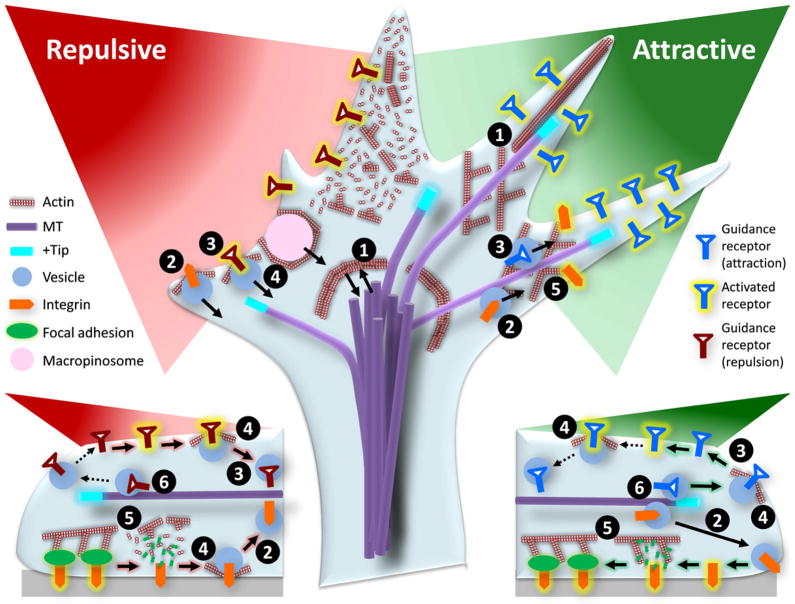Figure 3.
Schematic showing the complexity of cross-talk among different cellular machineries. The directional movement of the growth cone involves membrane protrusion at the front and retraction at the rear, which are controlled by bi-directional interactions between the actin and microtubules (1). Successful locomotion also requires the formation of new adhesion at the front and the destruction of adhesion at the rear, which are mediated by membrane recycling (2). Vesicular trafficking and recycling also control and regulate the number and distribution of guidance receptors on the surface, which will impact the spatiotemporal signal transduction (3). While the actin cytoskeleton is the driving force for membrane protrusion, it also regulates endocytosis and exocytosis in a spatiotemporal fashion, which could impact both the adhesion and receptor recycling (4). The actin cytoskeleton is also a part of the integrin-adhesion complex and regulates the stability and turnover of adhesion (5). Finally, microtubules and their plus-ends play a role in trafficking membrane channels and receptors (6).

